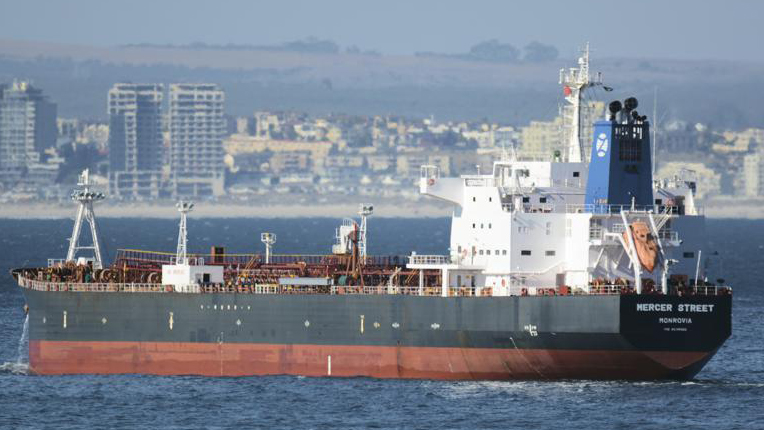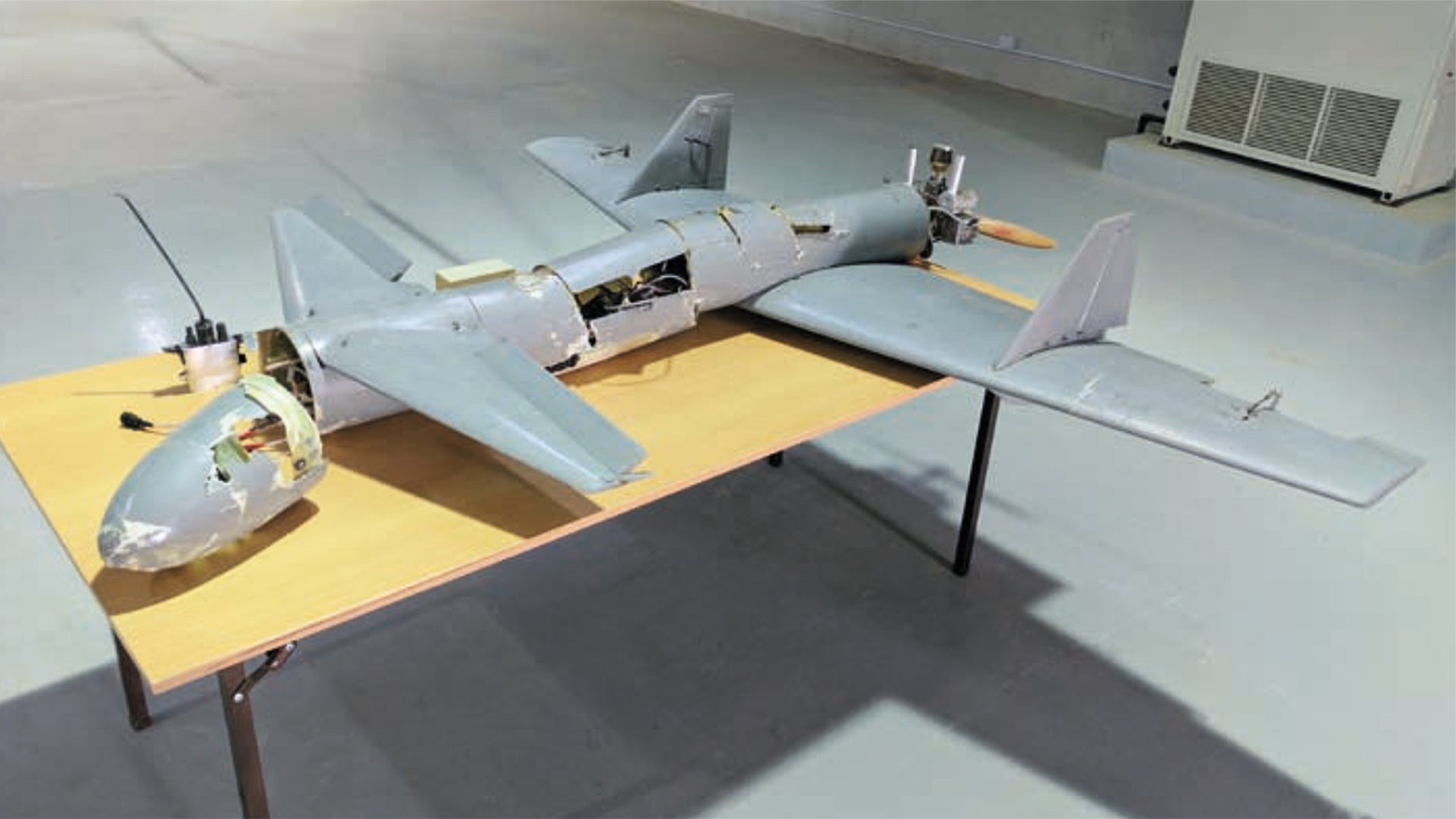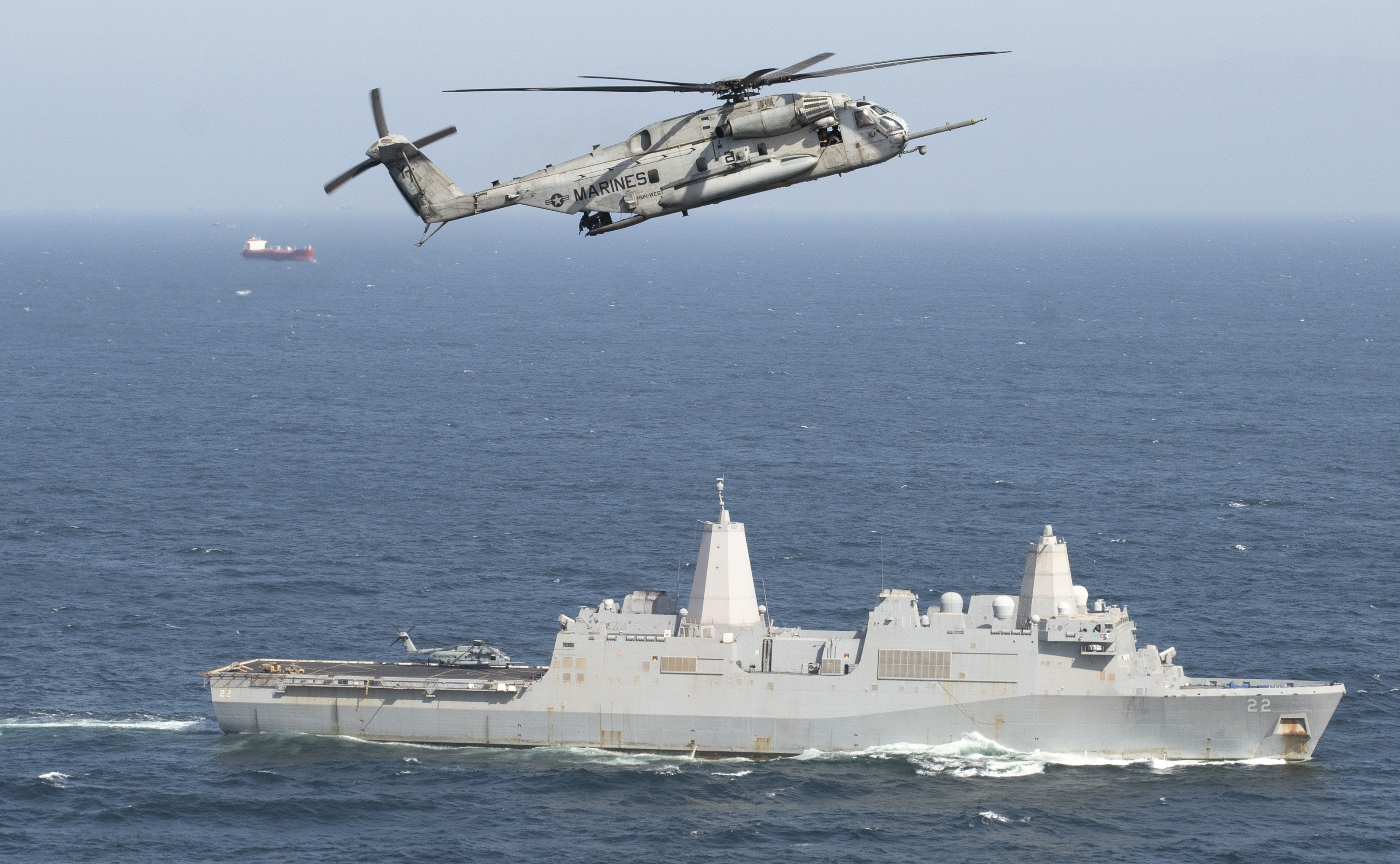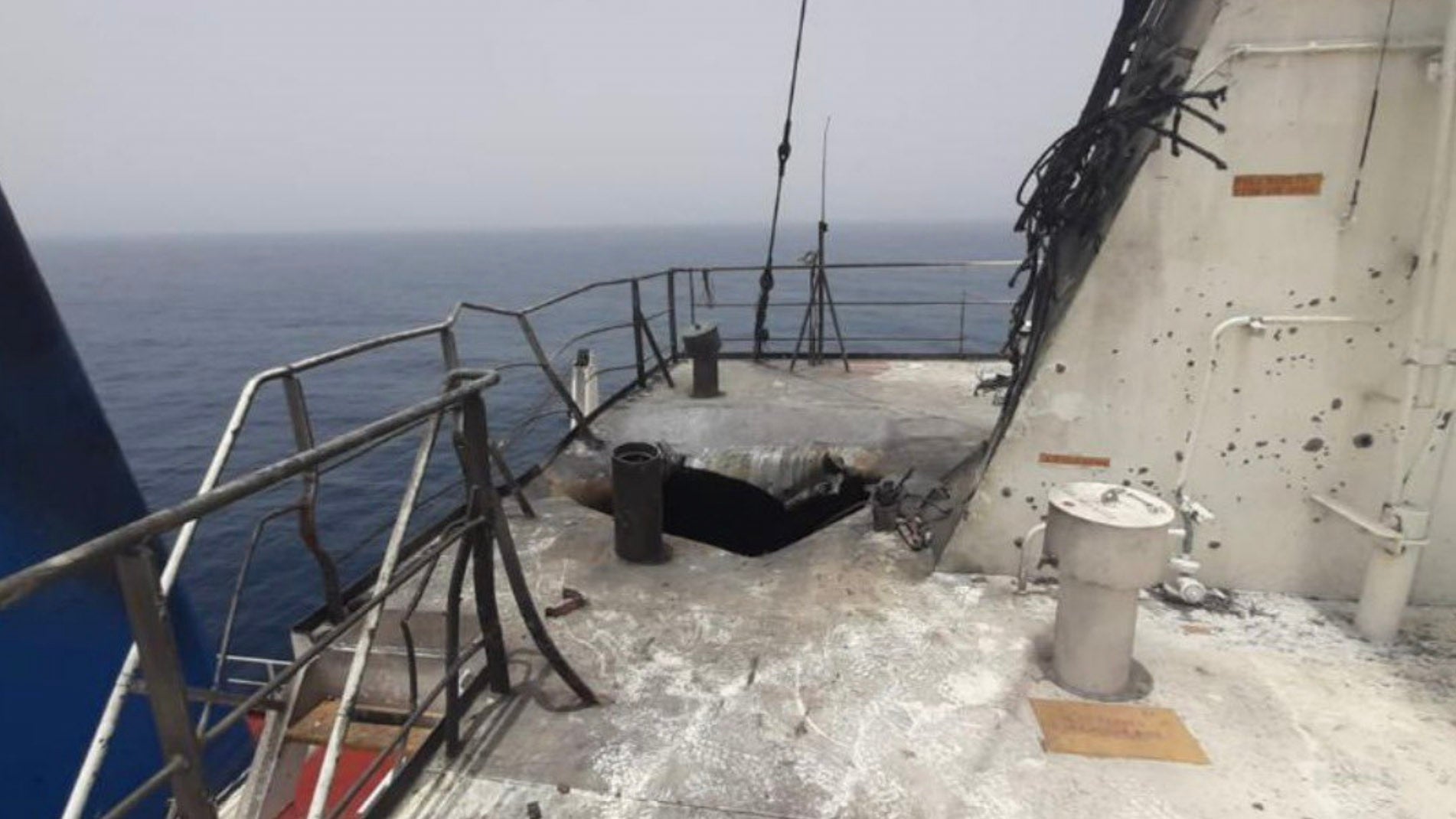Officials from the United States have called for a proportional, coordinated response to the attack on the Israeli-operated product tanker M/T Mercer Street in the Gulf of Oman last Thursday, which killed two crewmen, and which has now been formally blamed on Iran by several nations. The countries of the two victims — Romania and the United Kingdom — have issued statements putting the responsibility on Tehran and have also spoken of responding accordingly. Israel, too, has formally accused Iran of being behind the attack, Israeli Prime Minister Naftali Bennett claiming there was “evidence” of this, without providing any more details. Iran, for its part, has denied any connections to the incident.
In a statement yesterday, U.S. Secretary of State Antony J. Blinken condemned the attack on the Mercer Street, adding that the U.S. Department of State was “confident that Iran conducted this attack […] using one-way explosive UAVs.” The latter seems to be a new term for what have been commonly referred to as “suicide drones.” These are unmanned aircraft that carry an integral warhead and are intended to strike targets via slamming into them and detonating, a class of weapon that increasingly blurs the distinction between traditional missiles and armed drones.

“We are working with our partners to consider our next steps and consulting with governments inside the region and beyond on an appropriate response, which will be forthcoming,” the statement from the Secretary of State added. Blinken has now also spoken with the Israeli Foreign Minister and Alternate Prime Minister Yair Lapid to discuss the attack.
While there has been a spate of attacks on mainly commercial shipping in the region in recent years, part of an apparent tit-for-tat campaign waged by Iran and Israel, the Mercer Street incident is the first known attack of this kind to involve fatalities.
Photos, seen in the Tweets below, have also now emerged purportedly showing damage to the tanker, suggesting that whatever the weapon or weapons employed were targeted the bridge of the vessel. That is in keeping with some of the earliest reports of the incident, which described “several unmanned Iranian drones that crashed into living quarters underneath the ship’s command center.”
Today, the U.K.’s Foreign, Commonwealth & Development Office announced that it had summoned the Iranian Ambassador to the U.K., Mohsen Baharvand, to discuss the situation, while the U.K. Minister for the Middle East, James Cleverly, called for Iran to “immediately cease actions that risk international peace and security, and reinforced that vessels must be allowed to navigate freely in accordance with international law.”
Experts and observers have pointed that the fact that Cleverly, a minister, rather than a permanent secretary, was involved in the meeting likely reflects the perceived seriousness of the situation.
In a previous statement, the U.K. Foreign Secretary Dominic Raab announced his government’s judgment that the attack was a “deliberate, targeted [and] clear violation of international law by Iran,” and that it was “highly likely” that one or more drones had been used to hit the tanker.
“The U.K. is working with our international partners on a concerted response to this unacceptable attack,” Raab added. The British citizen killed in the attack was an employee of the British maritime security firm Ambrey, who also issued a statement of their own.
The U.K. government also held a Cabinet Office Briefing Room (COBR), or “Cobra” meeting over the weekend, during which officials would likely have discussed possible responses. These meetings are reserved for government responses to significant overseas events as well as national or regional crises. In the meantime, there are reports that a British special forces team has been sent to “help with the tanker investigation.”
The Romanian Ministry of Foreign Affairs, meanwhile, issued a statement that confirmed that the Romanian national killed in the incident was the ship’s captain. “Regarding the fact that the attack was deliberate and, respectively, coordinated by Iran, Romania requests the explanation […] by the Iranian authorities, without delay, and reserves the right to act accordingly, together with its international partners, for an appropriate response.”
While flying the Liberian flag and owned by a Japanese company, the Mercer Street is operated by Zodiac Maritime, a London-based company that belongs to the Israeli Eyal Ofer, a billionaire real estate and shipping magnate, and a philanthropist.
It’s unclear what kind of response Romania, the United Kingdom, and the United States might have in mind, but there are increasing indications that it might be some kind of coordinated effort. A spokesperson for Secretary Blinken confirmed that his office has “agreed to work with the United Kingdom, Romania, and other international partners to investigate the facts, provide support, and consider the appropriate next steps.”
The U.K. Chief of the General Staff, Sir Nick Carter, is also known to have recently been in contact with his Israeli counterpart, Lieutenant General Aviv Kohavi, to discuss “recent events in the region and common challenges.”
As we have discussed in the past, Iran and Israel are already engaged in a shadowy campaign that targets each other’s maritime interests, against a backdrop to long-running hostilities that have also included alleged assassinations and mysterious attacks on Iran’s nuclear infrastructure.
It’s unclear what hard evidence connects Tehran to the attack on the Mercer Street, although the use of suicide drones is certainly within the country’s capabilities and there seems to be an established pattern targeting Israeli-linked maritime traffic.

There is, however, the potential complicating factor that the attack last week was conducted by Tehran via one or more Iranian proxies, of which it has many in the region, a number of which have carried out different kinds of attacks on military and commercial targets on land and at sea, including with suicide drones. This would, at least, provide Iran with a potential argument based on plausible deniability.
Regardless, Romania, the United Kingdom, and the United States have all been quick to identify Tehran as the purported culprit and that could be followed up with more diplomatic actions.
While a direct military retaliation against Iran or Iranian interests may be a remote prospect, the incident could drive the United Kingdom, in particular, toward a more defensive posture as regards maritime traffic in the Gulf of Oman. In 2019, the British-flagged oil tanker Stena Impero was seized by Iran for two months after allegedly breaking maritime rules. A lethal drone strike, however, presents a significant escalation and may call for improved protection, perhaps in the form of an expanded Royal Navy presence in the area.
While there is already a U.S.-led International Maritime Security Construct (IMSC) in place specifically focused on protecting international shipping from attacks like that inflicted on the Mercer Street, it is almost impossible to provide an overarching defense against these types of drone strikes, which could be launched from the land, or from the water. Ultimately, even operating in convoys and providing a frigate for anti-drone area defense would not provide a guarantee of safety.

With that in mind, the United Kingdom, at least, may seek to bolster its commitment to the IMSC, of which it’s already a member, although actually finding available Royal Navy vessels for that won’t necessarily be straightforward, especially with important commitments in the North Atlantic, the Mediterranean, and, increasingly, further afield.
Should the drone threat be considered serious enough, there is also the possibility of deploying anti-drone detection and jamming systems on warships in the region, a tactic that has already been successful in knocking down Iranian drones in the past. But even these systems have very limited range and their effectiveness is far from guaranteed, especially against a multi-drone attack.
Finally, with Romania and the United Kingdom both being NATO members, there exists the possibility of appealing to the bloc for support. Article 4 of the NATO Treaty, for example, allows any ally to call for consultations if the security of any of them is threatened. Turkey, for instance, had the alliance deploy Patriot air defense systems to protect it from Syrian missile threats, as the result of an Article 4 consultation.
It could also be the case that the hawkish words from the American side are part of an effort to force Iran’s hand in the negotiations around the nuclear deal, which appear to have stalled for the time being. With that in mind, it’s possible too, that Iran’s apparent decision to escalate its actions against commercial shipping could also be tied to the nuclear deal.
Whatever the kind of response the various parties have in mind, it seems clear that the shadowy maritime campaign involving Iran and Israel has now expanded to involve other countries, too, regardless of whether they were the original targets. Perhaps the incident will serve as a wake-up to the international community; after all, Iran has been prosecuting similar attacks in the Mediterranean and the Red Sea and it was, perhaps, only a matter of time before one of these proved to be fatal.
Contact the author: thomas@thedrive.com
